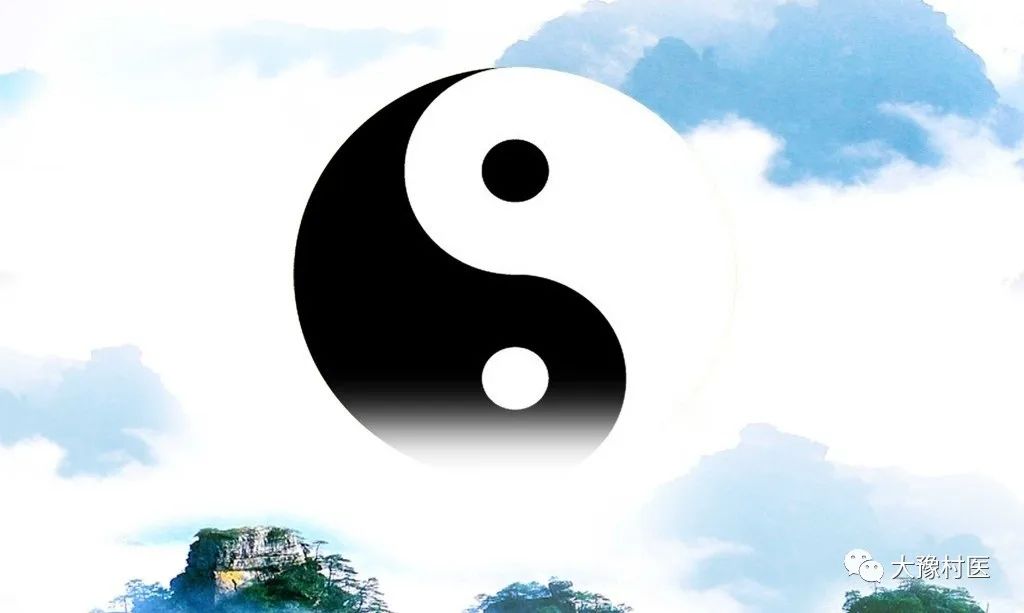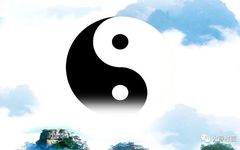Abnormal metabolism of body fluids
 The metabolism of body fluids essentially refers to the continuous generation, distribution, and excretion of body fluids. Normal metabolism of body fluids is a fundamental condition for maintaining a relatively constant balance between the generation, distribution, and excretion of body fluids within the body. Abnormal metabolism of body fluids indicates a disruption in the distribution of body fluids, leading to an imbalance between the generation and excretion of body fluids, resulting in insufficient generation, excessive consumption, and over-excretion of body fluids, causing a deficiency of body fluids in the body; or abnormal distribution and excretion obstacles, leading to slow circulation of body fluids within the body, resulting in pathological changes such as fluid retention, accumulation, and overflow.
The metabolism of body fluids essentially refers to the continuous generation, distribution, and excretion of body fluids. Normal metabolism of body fluids is a fundamental condition for maintaining a relatively constant balance between the generation, distribution, and excretion of body fluids within the body. Abnormal metabolism of body fluids indicates a disruption in the distribution of body fluids, leading to an imbalance between the generation and excretion of body fluids, resulting in insufficient generation, excessive consumption, and over-excretion of body fluids, causing a deficiency of body fluids in the body; or abnormal distribution and excretion obstacles, leading to slow circulation of body fluids within the body, resulting in pathological changes such as fluid retention, accumulation, and overflow.
The metabolism of body fluids is a complex physiological process. It is maintained by the coordinated physiological functions of multiple organs. In brief, the generation, distribution, and excretion of body fluids cannot be separated from the ascending and descending movements of Qi and the vaporization function of Qi. When the ascending and descending movements of Qi are normal, the balance of body fluid movements can be maintained; when the vaporization function of Qi is strong, body fluids can be generated, distributed, and excreted normally. Therefore, the movement of Qi and its vaporization function actually regulate the metabolism of body fluids throughout the body.From the perspective of the physiological functions of related organs, the generation of body fluids relies on the transformation of the spleen and stomach, while the distribution and excretion of body fluids depend on the spleen’s ability to disperse essence, the lung’s ability to diffuse and descend, the liver’s ability to regulate, the kidney and bladder’s ability to vaporize, and the triple burner’s ability to regulate water pathways. These interrelated physiological functions of the organs form the regulatory mechanism of body fluid metabolism, maintaining the coordinated balance between the generation, distribution, and excretion of body fluids. Therefore, if the ascending and descending movements of Qi lose balance, the vaporization function becomes abnormal, or if any organ or physiological function related to the lungs and other organs is abnormal, it can lead to abnormal metabolism of body fluids, resulting in insufficient body fluids or retention of body fluids within the body, thus leading to internal generation of dampness or phlegm.
1. Insufficient Body Fluids Insufficient body fluids refer to a quantitative deficiency of body fluids, which leads to the internal organs, orifices, skin, and hair losing their nourishing and moistening effects, resulting in a series of dry and dehydrated pathological states. This is often caused by pathogenic heat, emotional disturbances, excessive sweating, prolonged diarrhea, frequent urination, blood loss, or the overuse of acrid and drying agents, leading to the consumption of body fluids.Body fluids (Jin and Ye) differ in properties, distribution, and physiological functions, thus the pathogenesis and clinical manifestations of insufficient body fluids also vary. Jin is relatively clear and thin, flows easily, fills the blood vessels internally, moistens the organs, and reaches the skin and orifices externally, making it easy to dissipate and replenish. For example, excessive sweating in hot summer or thirst due to high fever; during dry seasons, dryness of the mouth, nose, and skin is common; symptoms such as sunken eyes, dry skin, and even cramps during excessive vomiting, diarrhea, or urination are all clinical manifestations primarily related to body fluid damage. Ye is thicker and less mobile, primarily nourishing the organs, filling the bone marrow, brain, and spinal cord, and lubricating the joints, generally not easily depleted, and once depleted, it is also not easily replenished. For instance, in the late stages of febrile diseases or chronic illnesses damaging Yin, one may observe a red tongue with little or no coating, dry lips and tongue without thirst, emaciation, dry skin and hair, and even tremors and spasms, which are all clinical manifestations of Yin fluid depletion and wind movement. However, it should be noted that while there are differences in pathogenesis and clinical manifestations between body fluid damage and fluid loss, Jin and Ye are fundamentally one entity, and physiologically they mutually generate and utilize each other, while pathologically they also influence each other. Generally speaking, body fluid damage does not necessarily accompany Yin damage or fluid loss; however, fluid loss must accompany body fluid damage. Therefore, body fluid damage is a gradual process of Yin damage and fluid loss; fluid loss is an extreme depletion of body fluids.2. Obstacles in the Distribution and Excretion of Body Fluids The distribution and excretion of body fluids are two important aspects of body fluid metabolism. Although these two aspects have different functional impairments, their results can lead to abnormal stagnation of body fluids within the body, becoming the fundamental cause of internal generation of dampness and phlegm. The obstacle in the distribution of body fluids refers to the inability of body fluids to be distributed normally, leading to slow circulation of body fluids within the body or stagnation in a specific area, resulting in undigested body fluids, internal generation of dampness, and phlegm formation. There are many causes for the obstruction of body fluid distribution, involving the lung’s ability to diffuse and descend, the spleen’s ability to transform and disperse essence, the liver’s ability to regulate, and whether the water pathways of the triple burner are unobstructed. For example, if the lung fails to diffuse and descend, phlegm will accumulate in the lungs; if the spleen fails to function properly, the transformation of dampness and dispersal of essence will be impaired, leading to slow circulation of body fluids and dampness accumulation; if the liver fails to regulate, Qi stagnation will occur, causing body fluids to remain stagnant, resulting in phlegm or water; if the water pathways of the triple burner are obstructed, it not only directly affects the circulation of body fluids but also impacts the excretion and distribution of body fluids. Although there are many causes, the primary issue is the impairment of the spleen’s transformation function. Thus, the Suwen states: “All dampness and swelling belong to the spleen.” The obstacle in the excretion of body fluids mainly refers to the reduced function of transforming body fluids into sweat and urine, leading to fluid retention and edema. The transformation of body fluids into sweat is primarily the lung’s diffusing function; the transformation of body fluids into urine is mainly the kidney’s vaporization function. Weakness in the functions of the lung and kidney can both lead to fluid retention and edema; however, the kidney’s vaporization function plays a dominant role in excretion. This is because, when the lung fails to diffuse and the pores are obstructed, the excretion of sweat is hindered, and the waste fluids after metabolism still transform into urine for excretion, as stated in the Ling Shu: “In cold weather, the pores are closed, Qi and dampness do not circulate, and water remains in the bladder, leading to urination and Qi.” Conversely, if the kidney’s vaporization function is reduced, the generation and excretion of urine will be obstructed, leading to excessive dampness and edema. Thus, the Suwen states: “The kidney is the gate of the stomach. If the gate is not functioning well, water accumulates and follows its kind.” It should be noted that while the obstacles in the distribution and excretion of body fluids are distinct, they often influence each other and are mutually causal, resulting in internal generation of dampness, phlegm formation, and various pathological changes.3. Dysfunction of Body Fluids and Qi-Blood As mentioned above, the generation, distribution, and excretion of body fluids depend on the vaporization of the organs and the ascending and descending movements of Qi, while the circulation of Qi also relies on body fluids as a carrier, reaching all parts of the body. At the same time, sufficient body fluids are also a condition for maintaining the fullness and smooth flow of blood vessels. Therefore, the coordination of body fluids and Qi-blood function is an important aspect of ensuring normal physiological activities in the body. Once the relationship between body fluids and Qi-blood loses its coordination, the following pathological changes may occur: 3.1. Stagnation of Body Fluids and Qi Obstruction Stagnation of body fluids and Qi obstruction mainly refers to a pathological state where metabolic disorders of body fluids lead to the retention of dampness and phlegm, causing Qi stagnation. For example, if water and phlegm obstruct the lungs, lung Qi becomes stagnant, and its diffusing and descending functions fail, leading to chest fullness, cough, and difficulty lying flat; if water and phlegm obstruct the heart, heart Qi is hindered, and heart Yang is suppressed, leading to palpitations and chest pain; if water and phlegm stagnate in the middle burner, they obstruct the Qi of the spleen and stomach, preventing clear Qi from rising and turbid Qi from descending, resulting in dizziness, fatigue, abdominal fullness, and poor digestion; if water and phlegm stagnate in the limbs, they can obstruct the meridians, presenting as heaviness and pain in the limbs.3.2. Qi Loss with Fluid Loss Qi loss with fluid loss mainly refers to a pathological state where excessive loss of body fluids leads to the loss of Qi, which follows the body fluids and is lost. This is often caused by high fever damaging body fluids, excessive sweating, or severe vomiting and diarrhea. The Shang Han Lun states: “Excessive sweating, if sweated again, will lead to the loss of Yang.” This indicates that excessive sweating and loss of body fluids can lead to the loss of Yang Qi. Similarly, the Jing Yue Quan Shu states: “If the gate is not secure, Qi will follow the diarrhea; if Qi is lost, Yang will decline.” The Jin Gui Yao Lue also points out: “After vomiting and diarrhea, there will be no complete Qi.” This indicates that frequent and large amounts of vomiting and diarrhea can also lead to the loss of Zheng Qi along with the consumption of body fluids.3.3. Dehydration of Body Fluids and Dry Blood Dehydration of body fluids and dry blood mainly refers to a pathological state where insufficient body fluids lead to the internal generation of heat or wind due to dry blood. Body fluids are an important component of blood, and both body fluids and blood originate from the refined essence of food and water. If high fever damages body fluids, or burns cause body fluid loss, or blood loss leads to fluid loss, or Yin deficiency leads to the consumption of body fluids, it can result in dehydration of body fluids and dry blood, presenting as irritability, dryness of the nasal and pharyngeal mucosa, or five hearts feeling hot, muscle wasting, dry skin, or skin itching and desquamation.3.4. Body Fluid Deficiency and Blood Stasis Body fluid deficiency and blood stasis mainly refer to a pathological state where the depletion of body fluids leads to stagnation of blood flow. This is often caused by high fever, burns, or excessive vomiting and sweating. When body fluids are significantly depleted, blood volume decreases, and blood circulation becomes sluggish, leading to blood stasis. On the basis of existing body fluid deficiency, one may observe a purplish tongue, or the presence of petechiae or purpura, or visible rashes, which are all clinical manifestations of blood stasis. Thus, Zhou Xuehai states in his Notes on Medicine: “Blood is like a boat; body fluids are like water.” “When body fluids are burned and depleted, blood circulation becomes more stagnant.”

